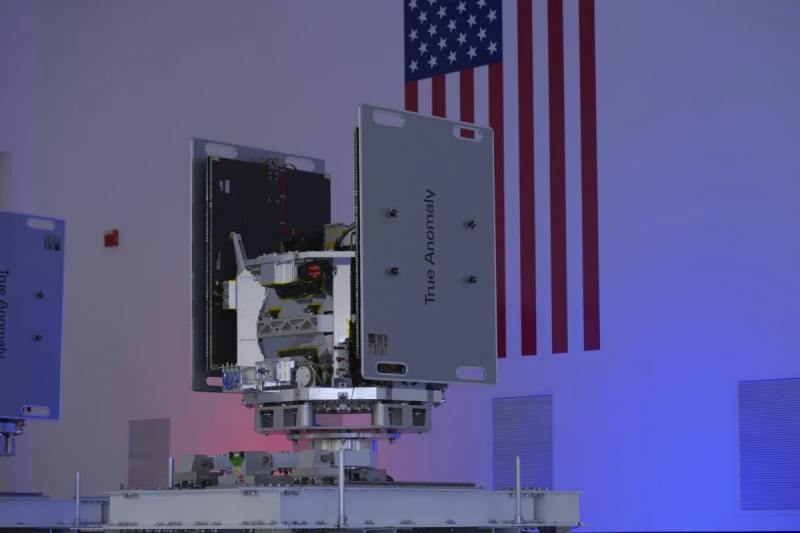
First Satellites To Be Launched By Space Tech Startup True Anomaly
- Technology
- February 12, 2024
The space startup True Anomaly is getting ready to launch its first two satellites, which are intended to navigate, examine, and take images of other objects up close.
Having recently completed a $100 million funding round, True Anomaly, a 2022 startup, aims to showcase the Jackal spacecraft’s capacity to carry out in-orbit operations, also referred to as rendezvous and proximity operations.
“The Jackals will capture high-resolution images and full-motion video of one another while maneuvering in close proximity,” True Anomaly’s founder and chief executive Even Rogers said in a recent interview.
In the forthcoming Transporter-10 rideshare, two 300 kg spacecraft called Jackals are slated to launch on a SpaceX Falcon 9 rocket.
The Centennial, Colorado-based business specializes on the military industry and plans to launch Jackal satellites to assist the U.S. Space Force in its operations. The satellites could be used, for instance, by military organizations to rehearse proximity operations, train operators in maneuver tactics, or test payloads in orbit.
“Designed With National Security Missions In Mind”
“A new class of space vehicle, purpose-built for national security space missions,” according to Rogers, was what the Jackal was called. Through Jackal, the business hopes to compete in the emerging field of non-Earth images, or the imaging of objects in space. The National Oceanic and Atmospheric Administration last year revealed modifications to the licensing process that have allowed these capabilities to be made commercially available.
August saw True Anomaly obtain a NOAA license for the first low-Earth orbit Jackal mission.
The corporation intends to pursue license amendments in order to deploy more satellites with comparable capabilities. A True Anomaly representative told SpaceNews, “We will file new license applications, as necessary, to cover larger constellations, different missions or orbits such as GEO, and new design variants.”
According to Rogers, one reason True Anomaly has drawn investors is because of the hope that it may be able to meet the increasing need for timely, high-quality data on the space environment.
He stated that the capacity to gather high-resolution multi-phenomenology data on resident space objects is “one of the most important gaps in space domain awareness.” The sensors that are currently in use on Earth to monitor space do not offer “a lot of intelligence-quality information.”
More precise information about spacecraft and debris objects is needed, he added, for military and intelligence organizations attempting to detect dangers in orbit. “One crucial tool for bridging those intelligence gaps is non-Earth imagery.”
The five sensors on a Jackal include three imaging payloads: visible narrow field of view, visible wide field of view, longwave infrared, and radar.
“A Big Market” For Imagery Not On Earth
In order to demonstrate their non-Earth imaging capabilities, one Jackal will take comprehensive pictures of the other during their first trip. There will be two identical vehicles in orbit. One is going to be the “resident space object,” while the other is going to be the “imager.”
Rogers expressed optimism on the non-Earth imagery industry. Although the Space Force has not released their estimated spending in this area, service chiefs have stated that they anticipate an increase in the need for “space domain awareness” as space gets more crowded and adversarial countries put systems in place to track and perhaps attack American satellites.
“Is this a big market? Yes,” said Rogers. “Our last fundraising was predicated on that fact. We think non-Earth imaging is a very important and very large market, and this is based on demand from the U.S. government, but also from commercial operators.”
Well-known Earth observation businesses that currently manage satellites equipped with high-resolution cameras and sensors are competitors in this sector. Other for-profit businesses focus on images other than Earth.
Because it will offer “close range, sustained imaging of resident space objects in a variety of phenomenologies,” according to Rogers, True Anomaly will be unique.
The objective is to establish a constellation once the Jackal technology has been shown in orbit, he stated. The geostationary belt, which is 22,000 miles above Earth and home to the military’s most valuable satellites, would require several dozen satellites to watch.